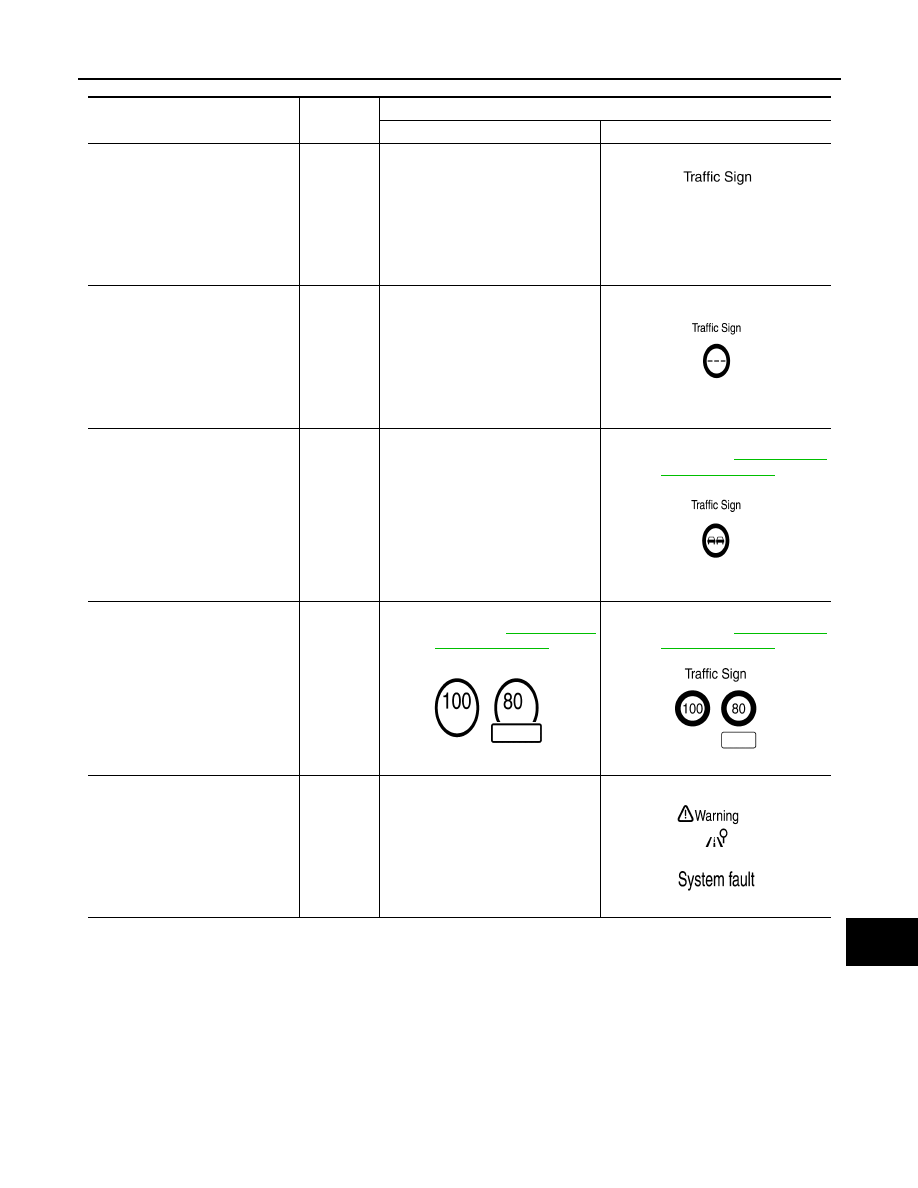содержание .. 322 323 324 325 ..
Nissan X-Trail 32. Instruction - part 324

DAS
OPERATION
DAS-37
< SYSTEM DESCRIPTION >
[DRIVER ASSISTANCE SYSTEM]
C
D
E
F
G
H
I
J
K
L
M
B
N
P
A
DAA
System status
Condition
Display on combination meter
Upper part
Middle part
TSR OFF
—
—
TSR ON
Road sign
not detect-
ed
—
Road sign
detected
(except for
speed limit
signs)
—
This is an example. For details of dis-
played signs, refer to
Road sign
detected
(Speed limit
signs)
This is an example. For details of dis-
played signs, refer to
This is an example. For details of dis-
played signs, refer to
TSR is malfunction
The TSR
system is
automati-
cally can-
celed.
—
JSOIA1611ZZ
JSOIA1612ZZ
JSOIA1613ZZ
JSOIA1614ZZ
JSOIA1615ZZ
JSOIA1616ZZ